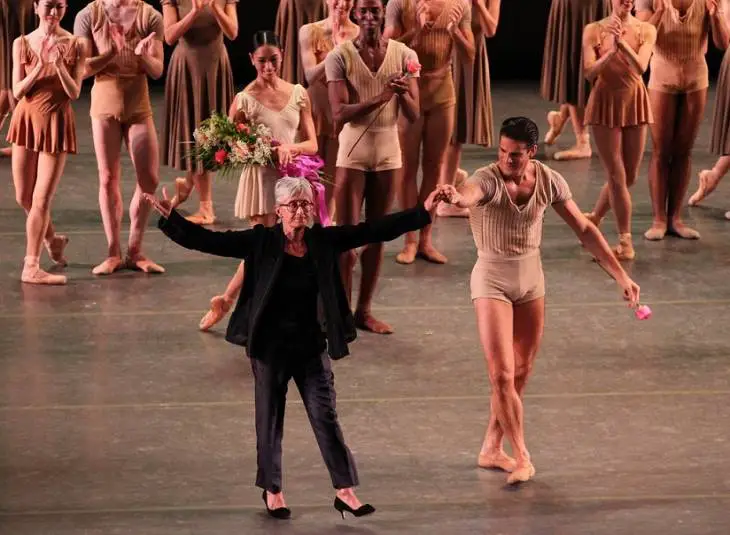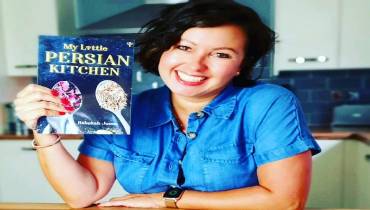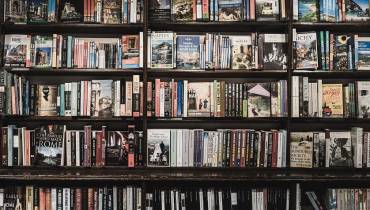10 Powerful Lessons from Twyla Tharp’s “The Creative Habit”

Twyla Tharp and Marcelo Gomes, American Ballet Theatre, Bach Partita, November 1, 2013. Photo: Kent G Becker/Flickr
What makes someone creative? How does one face that empty page or empty stage and create something where nothing existed before?
These are critical questions every artist grapples with daily. Even if you don’t consider yourself an artist or creative person per se, you also face similar dilemmas on a day to day basis. For example, you may sometimes wonder, "What will I cook today that is fresh and appetizing?" "How will I make my presentation the best it can be and lock that lucrative deal?" "How can I make my e-mails more persuasive?" These too are creative pursuits and they also require creative output.
Twyla Tharp, one of America’s greatest dance choreographers, with over 135 dances produced by her own dance company, Twyla Tharp Dance, as well as the likes of The Joffrey Ballet, New York City Ballet, Paris Opera Ballet, London’s Royal Ballet, and American Ballet Theatre, demonstrates in her bestselling book “The Creative Habit: Learn it and Use it for Life” that creativity is no mystery. Creativity is the product of hard work and preparation, of knowing one's aims and one's subject, of learning from approaches taken in the past. It's a process undertaken every day. It is a habit.
“Creativity is a habit, and the best creativity is a result of good work habits. That’s it in a nutshell,” writes the acclaimed choreographer and creator of the smash-hit Broadway show, Movin’ Out.
Understanding Creativity As a Habit
Tharp’s assertion may at first seem counterintuitive in the context of the Eureka! moment narrative and our notion of the genius suddenly struck by a brilliant idea, but she demonstrates her point that creativity is a habit with powerful illustrations drawn from the Bible, Dostoyevsky, Mozart, Beethoven, and many other creative greats of the Western Canon.
Tharp, who has won Emmy and Tony awards, shows that the struggle to be creative is nothing new, and that great artists have fought the same battles as anyone striving to create today. She discloses her own five biggest creative fears, shows us how she combats them, and gives us a recipe for getting out of a creative rut in this must-read book for artists and the creative at heart.;
“The Creative Habit” is not merely a look inside the life of a remarkable woman with remarkable skills, but a practical, inspiring, and encouraging guide to help each of us hone our craft, cultivate our genius, and overcome our fears in order to achieve our fullest creative potential. It provides 32 practical exercises based on the lessons Tharp has learned in her outstanding 50-year career, and this is what makes Tharp's book more than just a pep talk for creativity.
Key Lessons in Creativity

Here are key lessons on the creative process we picked out from the book:
1. Follow your own creative path.
“I believe that we all have strands of creative code hard-wired into our imaginations. These strands are as solidly imprinted in us as the genetic code that determines our height and eye color, except they govern our creative impulses. They determine the forms we work in, the stories we tell, and how we tell them.
Another thing about knowing who you are is that you know what you should not be doing, which can save you a lot of heartaches and false starts if you catch it early on.”
2. Know the nuts and bolts of your craft.
“Leonardo [da Vinci] understood that the better you know the nuts and bolts of your craft, the more fully you can express your talents. The great painters are incomparable draftsmen. They also know how to mix their own paint, grind it, put in the fixative; no task is too small to be worthy of their attention.
The great composers are usually dazzling musicians. They have to know their instrument before they can make it sing the tune in their head... A great chef can chop and dice better than anyone in his kitchen. The best fashion designers are invariably virtuosos with a needle and thread...
The best writers are well-read people. They have the richest appreciation of words, the biggest vocabularies, the keenest ear for language. Words and language are their tools, and they have learned how to use them...
What all these people have in common is that they have mastered the underlying skills of their creative domain, and built their creativity on the solid foundation of those skills”
3. Combine passion with skill.
“Without passion, all the skill in the world won’t lift you above craft. Without skill, all the passion in the world will leave you eager but floundering. Combining the two is the essence of the creative life.
We need this breadth and passion if we’re going to keep perfecting our craft, whether or not there is approval, validation or money coming from it.”
4. Link your creative practice with a ritual.
“Athletes know the power of triggering a ritual. A pro golfer may walk along the fairway chatting with his caddie, his playing partner, a friendly official or scorekeeper, but when he stands behind the ball and takes a deep breath, he has signaled to himself it’s time to concentrate.
A basketball player comes to the free-throw line, touches his socks, his shorts, receives the ball, bounces it exactly three times, and then he is ready to rise and shoot, exactly as he’s done a hundred times a day in practice.
By making the start of the sequence automatic, they replace doubt and fear with comfort and routine.”
5. Set up a proper work station, environment.
“Find a working environment where the prospect of wrestling with your muse doesn't scare you, doesn't shut you down. It should make you want to be there, and once you find it, stick with it. To get the creative habit, you need a working environment that's habit-forming. All preferred working states, no matter how eccentric, have one thing in common: When you enter into them, they compel you to get started.”
Elsewhere in the book she says.
“When I walk into [the studio] I am alone, but I am alone with my body, ambition, ideas, passions, needs, memories, goals, prejudices, distractions, fears.”
6. Invest in yourself.
“Make it your priority. Work around it. Once your basic needs are taken care of, money is there to be used. What better investment than in yourself?”
Good point. Whether you’re putting money into supplies, or taking the time for a class or workshop, the payoff is usually much greater than the expense.
7. Don’t focus too much on money.
“I’ve been on enough big-budget film sets to appreciate the malignant influence of abundance and bloat… It’s tempting to believe that the quantity and quality of our creative productivity would increase exponentially if only we could afford everything we’ve imagined, but I’ve seen too many artists dry up the moment they had enough money in the bank.”
She reminds us:
“Remember this the next time you moan about the hand you’re dealt: No matter how limited your resources, they’re enough to get you started. Time, for example, is our most limited resource, but it is not the enemy of creativity that we think it is. The ticking clock is our friend if it gets us moving with urgency and passion. Give me a writer who thinks he has all the time in the world and I’ll show you a writer who never delivers.”
And she warns:
“Whom the gods wish to destroy, they give unlimited resources.”
8. Just do it. Creativity is work.
“Immerse yourself in the details of the work. Commit yourself to mastering every aspect. At the same time, step back to see if the work scans, if it’s intelligible to an unwashed audience. Don’t get so involved that you lose what you’re trying to say.
You may wonder which came first: the skill or the hard work. But that's a moot point. The Zen master cleans his own studio. So should you.
“The more you are in the room working, experimenting, banging away at your objective, the more luck has a chance of biting you on the nose.”
9. Don’t do it out of obligation.
“But obligation, I eventually saw, is not the same as commitment, and it's certainly not an acceptable reason to stick with something that isn't working.
Obligation is a flimsy base for creativity, way down the list behind passion, courage, instinct, and the desire to do something great.”
10. Be confident, and keep going.
“Confidence is a trait that has to be earned honestly and refreshed constantly; you have to work as hard to protect your skills as you did to develop them…. The one thing that creative souls around the world have in common is that they all have to practice to maintain their skills. Art is a vast democracy of habit.”
Get your copy of the book today and uncover many more gems. The book doesn’t exactly fit into the “self-help” box, which is already saturated with cookie-cutter books on making yourself a happy, skilled, overachiever, but it certainly will inspire and keep you going strong, especially if you’re flagging.
*all quotes are from Twyla Tharp's 'The Creative Habit'




















